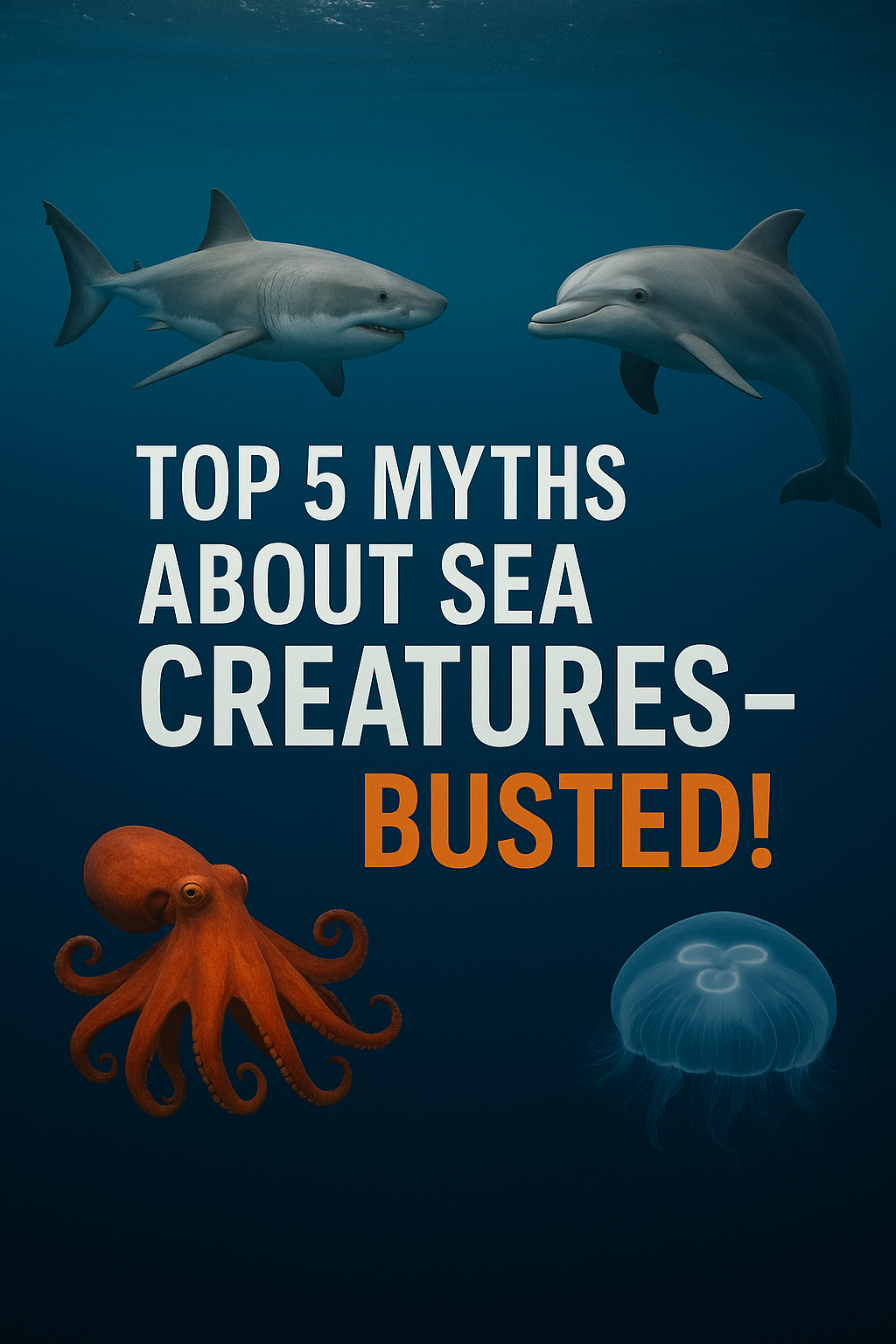
Top 5 Myths About Sea Creatures – Busted !
The ocean may be mysterious, but it’s full of amazing truths waiting to be discovered. 🌊 Dive into the truth behind some of the most common myths about sea animals. From sharks and dolphins to jellyfish and octopuses — we’re busting 5 popular misconceptions you’ve probably believed!
❌ Myth 1: “Sharks are man-eating monsters.”
✅ Truth: Despite what movies like Jaws show, sharks are not out to eat humans. Most shark bites happen by mistake — often because surfers or swimmers look like seals from below. In fact:
-
🦈 Humans kill over 100 million sharks per year, mostly for shark fin soup.
-
🦈 Sharks help keep the ocean ecosystem healthy by eating weak or sick fish.
-
🦈 The chance of getting bitten by a shark is less than 1 in 3.7 million.
📝 Singapore note: Most shark species found near Southeast Asia are reef sharks — shy, small, and avoid people.
❌ Myth 2: “Octopuses are dumb sea creatures.”
✅ Truth: Octopuses are some of the smartest animals in the sea — and possibly the planet!
-
🧠 They have nine brains — one central brain and one mini-brain in each arm.
-
🧠 They can open jars, solve mazes, escape tanks, and even camouflage in seconds.
-
🧠 Each arm can act independently to explore, taste, and move.
🐙 In aquariums worldwide, octopuses are known to escape through tiny holes and pull off sneaky tricks to get food!
❌ Myth 3: “All jellyfish are dangerous to touch.”
✅ Truth: While some jellyfish do sting and can be dangerous (like box jellyfish), many species are harmless to humans.
-
🪼 Moon jellies, for example, have very mild or no stings.
-
🪼 Some jellyfish are even farmed for food in parts of Asia!
-
🪼 Jellyfish don’t have brains, hearts, or bones — just a nerve net and a body made mostly of water.
⚠️ Still, don’t touch wild jellyfish, especially in warm tropical waters like Sentosa or Changi — you never know the species!
❌ Myth 4: “Sea turtles can crawl out of their shells.”
✅ Truth: A turtle’s shell is part of its body — it’s fused to their ribs and spine.
-
🐢 Their shell has two parts: the top (carapace) and bottom (plastron).
-
🐢 Turtles breathe and grow with their shells; they don’t “outgrow” them.
-
🐢 Damaging a turtle’s shell can be fatal — it's like cracking their backbone.
🐢 Singapore note: Hawksbill turtles sometimes nest on local beaches! Look but don’t touch if you spot one.
❌ Myth 5: “Dolphins are always friendly and harmless.”
✅ Truth: Dolphins are highly intelligent, but they’re still wild predators — not cartoon characters.
-
🐬 They live in social groups, use tools, and communicate with complex clicks and whistles.
-
🐬 But they can also be aggressive, territorial, and even bully or kill other marine animals.
-
🐬 Some species (like orcas, which are actually dolphins) are apex predators.
🧠 Dolphins have personalities — some are playful, others not so much! Respect their space, especially in the wild.
📚 Ocean Facts to Remember:
-
Over 80% of the ocean is still unexplored — most sea animals remain undiscovered.
-
The ocean covers 70% of Earth’s surface, but we know more about space than our deep sea.
-
Marine life helps regulate the climate, provides food, and is key to the planet’s health.
💬 Final Thought:
Sea animals are amazing, misunderstood, and vital to our world. The more we understand them, the more we can protect their habitats — and keep our oceans thriving for generations to come.
